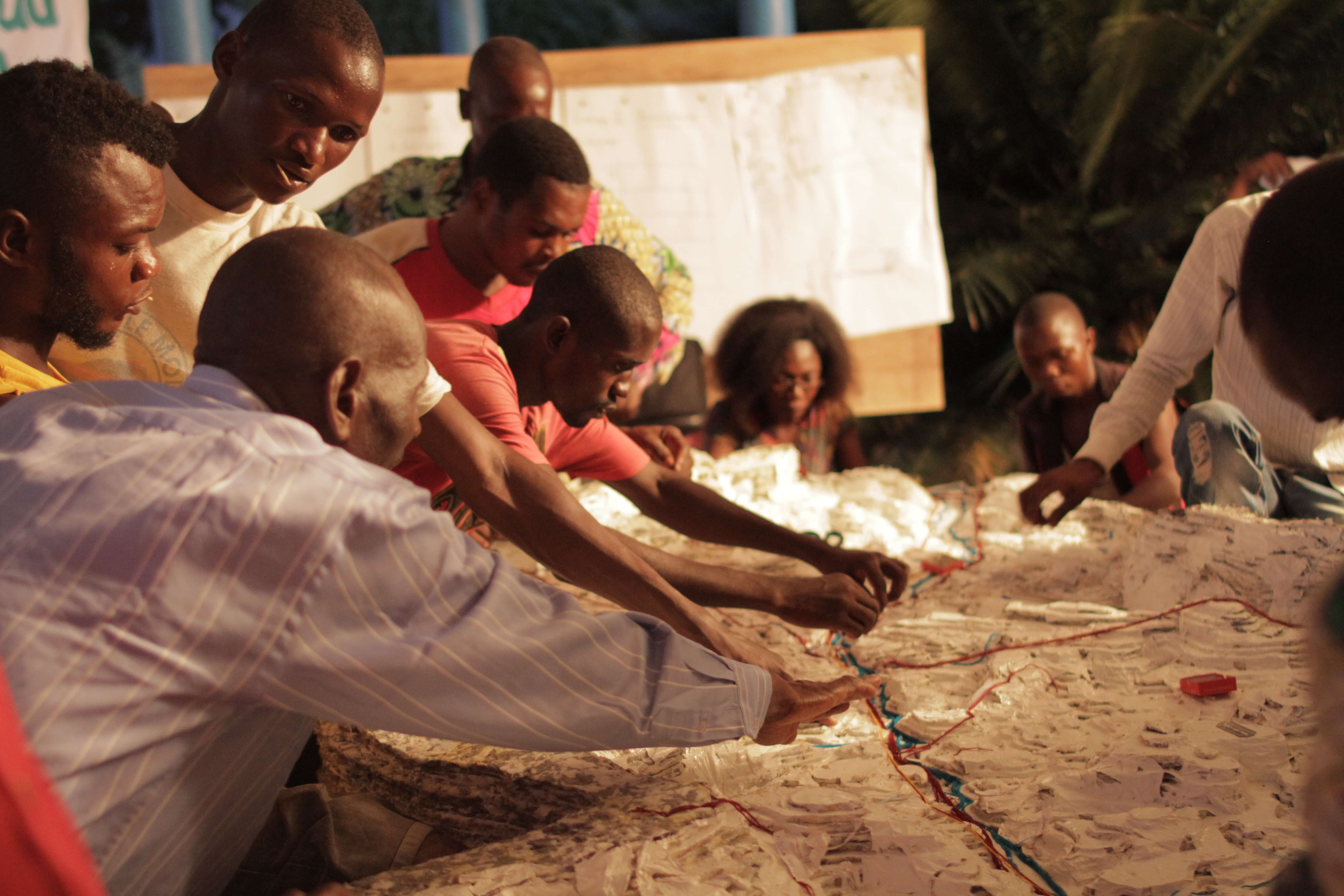

In order to establish a risk-informed and sustainable water resource management framework for the Lukaya basin, ecosystem-based measures are mainstreamed into an Integrated Water Resource Management (IWRM) Action Plan. The Association of the Users of the Lukaya River Basin (AUBR/L) developed the plan with support from UNEP and an international expert and is responsible for its implementation.
The Plan outlines a series of priority actions under four main pillars: water, environment, land use planning and governance. An integral component of the Action Plan is promoting sustainable ecosystem management approaches within the overarching framework of IWRM.
Development of the IWRM Action Plan emphasized the importance of linking upstream and downstream communities and strengthening their knowledge of the geographic and socio-economic conditions within their shared river basin. 3D participatory mapping was used to map hazards, land use types, natural resources and identify major environmental problems and areas at risk in the basin, through a multi-stakeholder, participatory approach.
Furthermore soil erosion and hydro-meteorological monitoring was put in place to allow for flood risk modelling. This would establish baselines and provide data to inform IWRM planning.
The Eco-DRR project was implemented in conjunction with an UNDA-funded IWRM project in the same area.
3D participatory mapping is an excellent tool because it facilitates the integration of local
spatial knowledge with topographic data through the participation of many stakeholders and the use of geographic information systems.
A key ingredient of successfully promoting Eco-DRR through IWRM in DRC was the sustained participation of local river users, through the AUBR/L.
The process of IWRM planning was intensive and took almost a year for the first draft to be produced.
The community-based approach (through AUBR/L) is appropriate because of the weak presence of central technical administration at the local level in post-conflict DRC. Having an existing water management institution was fortunate and enabled bringing together key stakeholders from both upstream and downstream and enhancing collaborative relationships. Obtaining buy-in was crucial for the development of the plan and also for activities, such as installing monitoring systems on land.
Several multi-stakeholder workshops and awareness raising were undertaken for the process. As a result, participants gained appreciation of the basin as a shared landscape and identified common priorities for sustainable watershed management, which also contributes to climate and disaster resilience.